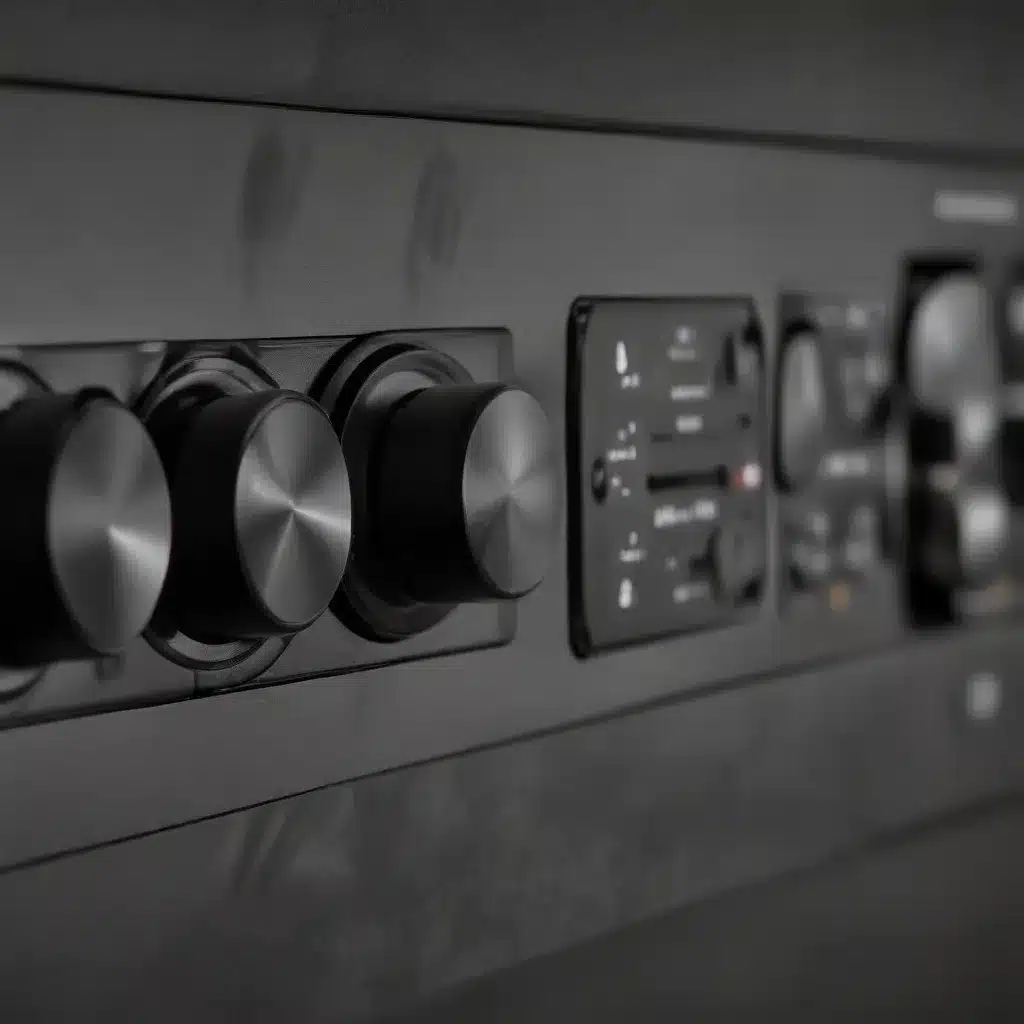
Audio Hardware
Audio connectivity issues can stem from problems with the physical hardware components involved in audio transmission. Let’s take a closer look at some key audio hardware elements and how to troubleshoot them.
Cables and Connectors
One of the most common culprits for audio problems is the cabling and connectors used to link audio devices. Check all cables for signs of damage, such as fraying, kinks, or loose connections. Try swapping out cables to isolate the issue. Pay close attention to the type of connector – analog 3.5mm, RCA, HDMI, USB, or digital optical/coaxial. Ensure the ports on your devices match the cable connectors.
Sound Cards
For desktop PCs, the sound card is responsible for processing and outputting audio. If you’re experiencing audio issues, try reseating the sound card or installing updated drivers. On laptops, the built-in sound chipset may be the source of problems. Explore your system settings to ensure the correct audio device is selected.
Speakers and Headphones
Issues can also arise with the speakers or headphones themselves. Check the volume and mute settings, as well as the connection to your audio source. Try swapping out the audio peripherals to isolate the faulty component. For wireless devices, ensure the battery is charged and the Bluetooth or wireless connection is stable.
Audio Software
Beyond the physical hardware, software drivers and configurations play a crucial role in maintaining reliable audio connectivity.
Audio Drivers
Outdated, corrupt, or incompatible audio drivers can cause a range of problems, from distortion to total audio failure. Visit your device manufacturer’s website to download the latest official drivers for your operating system. Follow the installation instructions carefully.
Media Players
The media player software you use to listen to audio can also impact connectivity. Ensure you have the latest version of your preferred player installed, and check the audio output settings. Try switching to a different player to rule out any software-specific issues.
Audio Codecs
Audio codecs are the software components that decode and interpret different audio file formats. If you’re experiencing issues with specific audio file types, ensure you have the necessary codecs installed. You can try downloading and installing a codec pack or updating your media player’s codec support.
Troubleshooting Audio Issues
Now that we’ve covered the key hardware and software elements, let’s dive into some common audio problems and how to resolve them.
Identifying Audio Problems
Audio Distortion: This can manifest as crackling, popping, or buzzing sounds. Potential causes include faulty cables, interference, or incorrect audio settings.
No Audio Output: If you’re not hearing any sound at all, check the volume levels, ensure the correct audio device is selected, and inspect the cables and connections.
Intermittent Audio: Audio that cuts in and out or experiences sudden dropouts may be due to unstable connections, wireless interference, or power management issues.
Troubleshooting Techniques
Hardware Inspection: Visually inspect all audio cables and connectors for any signs of damage. Try swapping out cables or testing the audio devices with different equipment to isolate the problem.
Software Configuration: Ensure your audio drivers are up-to-date and that the correct audio device is selected in your system settings. Adjust volume levels and experiment with different audio settings.
Diagnostic Tools: Utilize built-in system tools or third-party utilities to diagnose audio issues. Windows has a built-in “Playing Audio” troubleshooter, and there are various audio testing apps available.
Audio Connectivity Protocols
Audio signals can be transmitted using both analog and digital protocols, each with their own strengths and limitations.
Analog Audio Connections
3.5mm Jack: The ubiquitous 3.5mm audio jack is a common way to connect headphones, speakers, and other audio devices to computers, smartphones, and other electronics. It carries a stereo analog signal.
RCA Connectors: RCA cables, typically color-coded (red and white/yellow), are used for analog audio connections in home entertainment systems, professional audio equipment, and legacy devices.
Digital Audio Connections
HDMI: HDMI cables can carry both video and multi-channel digital audio, making them a versatile option for connecting devices like TVs, game consoles, and A/V receivers.
USB Audio: USB ports can transmit high-quality digital audio, often used for connecting external sound cards, DACs, and USB microphones.
Optical/Coaxial: These digital connections use optical or coaxial cables to send multi-channel surround sound audio signals between compatible devices like A/V receivers and Blu-ray players.
Audio Optimization
To ensure the best possible audio experience, it’s important to optimize both your system settings and the physical environment.
System Settings
Volume Levels: Ensure all volume controls, from your operating system to individual applications, are set to appropriate levels to avoid clipping or distortion.
Sound Mixer: Use your computer’s sound mixer to adjust the balance and levels of different audio sources and applications.
Power Management: Disable any power-saving settings that could potentially affect audio performance, such as CPU throttling or USB power management.
Environment Factors
Electromagnetic Interference: Positioning audio cables away from sources of electromagnetic interference, like power cables or electrical devices, can help minimize audio quality degradation.
Acoustic Reflections: Be mindful of the acoustics in your environment, as hard surfaces can cause unwanted audio reflections and echoes. Soft furnishings and acoustic treatment can help mitigate these issues.
Cable Lengths: Excessively long audio cables can pick up interference and degrade signal quality. Use the shortest cable lengths necessary for your setup.
By understanding the hardware, software, and environmental factors that contribute to audio connectivity problems, you’ll be well-equipped to diagnose and resolve a wide range of audio issues. Remember, a systematic troubleshooting approach and a keen eye for detail are key to maintaining high-quality audio in your IT setup.
If you’re still experiencing persistent audio problems after trying these troubleshooting steps, be sure to check out our computer repair services at https://itfix.org.uk/computer-repair/. Our expert technicians are always here to help resolve any IT-related issues you may be facing.












